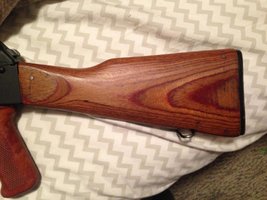Looking at the stock, it seems to cry out for a coat of oil. I have BLO and Tung oil here at home. Let the punches fly - who says B.L.O. versus T.O.? There is also the option of using Howard's Feed and Wax, and the minimalist approach of leaving it alone.
T![Popcorn [popcorn] [popcorn]](/xen/styles/default/xenforo/smilies.vb/043.gif)
T
![Popcorn [popcorn] [popcorn]](/xen/styles/default/xenforo/smilies.vb/043.gif)
Last edited:

